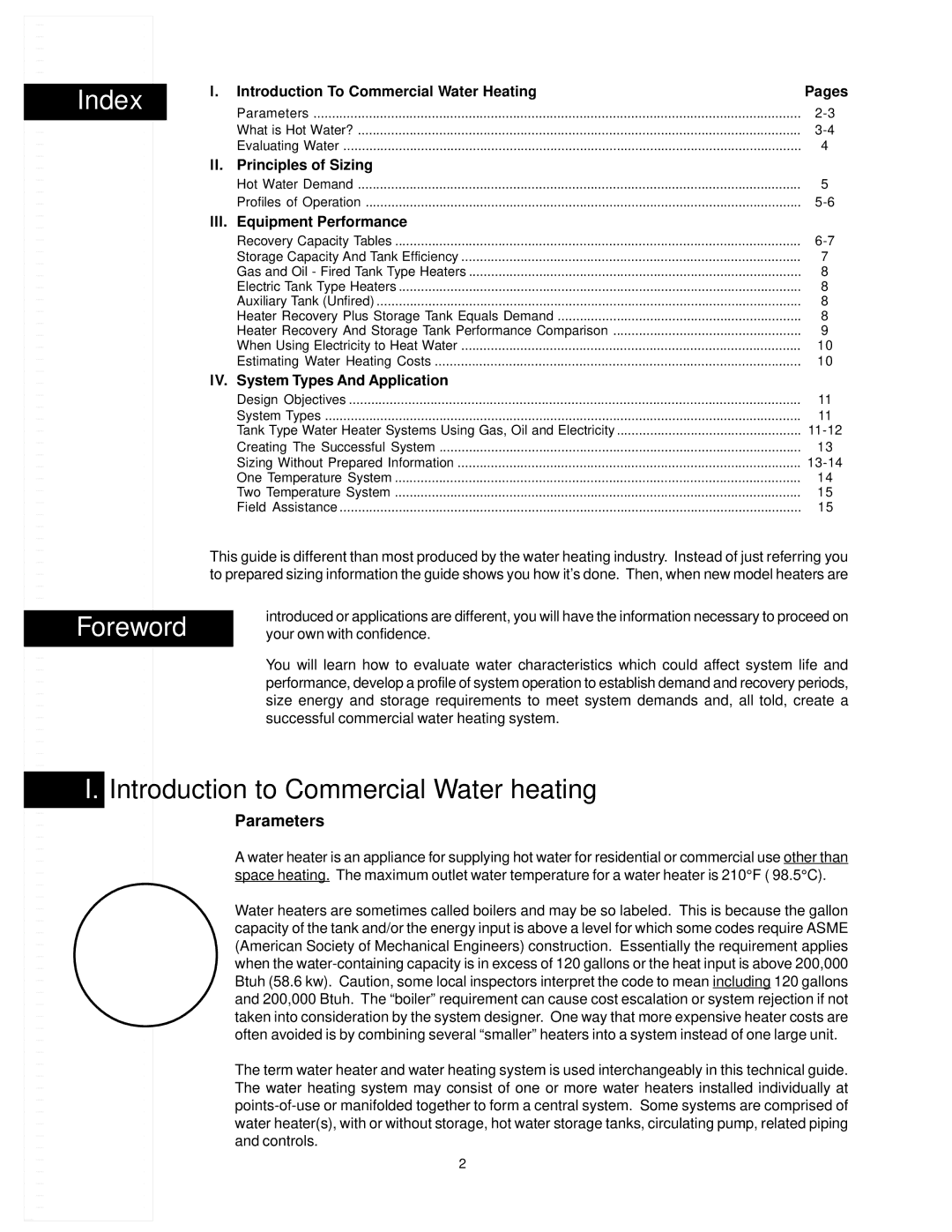
Index
l. Introduction To Commercial Water Heating | Pages |
Parameters | |
What is Hot Water? | |
Evaluating Water | 4 |
ll. Principles of Sizing |
|
Hot Water Demand | 5 |
Profiles of Operation | |
lll. Equipment Performance |
|
Recovery Capacity Tables | |
Storage Capacity And Tank Efficiency | 7 |
Gas and Oil - Fired Tank Type Heaters | 8 |
Electric Tank Type Heaters | 8 |
Auxiliary Tank (Unfired) | 8 |
Heater Recovery Plus Storage Tank Equals Demand | 8 |
Heater Recovery And Storage Tank Performance Comparison | 9 |
When Using Electricity to Heat Water | 10 |
Estimating Water Heating Costs | 10 |
lV. System Types And Application |
|
Design Objectives | 11 |
System Types | 11 |
Tank Type Water Heater Systems Using Gas, Oil and Electricity | |
Creating The Successful System | 13 |
Sizing Without Prepared Information | |
One Temperature System | 14 |
Two Temperature System | 15 |
Field Assistance | 15 |
This guide is different than most produced by the water heating industry. Instead of just referring you to prepared sizing information the guide shows you how it’s done. Then, when new model heaters are
Foreword | introduced or applications are different, you will have the information necessary to proceed on |
your own with confidence. | |
| You will learn how to evaluate water characteristics which could affect system life and |
| performance, develop a profile of system operation to establish demand and recovery periods, |
| size energy and storage requirements to meet system demands and, all told, create a |
| successful commercial water heating system. |
I. Introduction to Commercial Water heating
Parameters
A water heater is an appliance for supplying hot water for residential or commercial use other than space heating. The maximum outlet water temperature for a water heater is 210°F ( 98.5°C).
Water heaters are sometimes called boilers and may be so labeled. This is because the gallon capacity of the tank and/or the energy input is above a level for which some codes require ASME (American Society of Mechanical Engineers) construction. Essentially the requirement applies when the
The term water heater and water heating system is used interchangeably in this technical guide. The water heating system may consist of one or more water heaters installed individually at
123456789011 | 2 |
